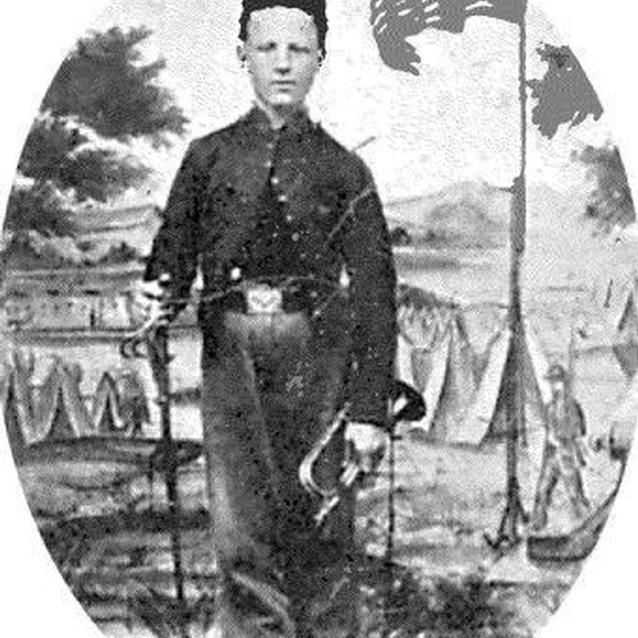"...it seemed as if a million bees were singing in the air. The shouts and yells from either side sounded like menaces and threats. But I had reached the goal, had caught up the staff which was already splintered by shot, and the colors pierced with many a hole, and stained here and there with the lifeblood of our comrades..."
The Medal of Honor was given "to such noncommissioned officers and privates as shall most distinguish themselves by their gallantry in action, and other soldier-like qualities, during the present insurrection."
The Bravest of the Brave - The Medal of Honor

National Park Service
"...when a bullet shattered my arm. Luckily my legs were still serviceable, and, seizing the precious bunting with my left hand, I made the best eighty yard time on record, receiving two more wounds..."
This was how 2nd Lt. Charles B. Tanner, 1st Delaware Infantry later recalled his actions on September 17, 1862. The official citation summed it up as, "Carried off the regimental colors, which had fallen within 20 yards of the enemy's lines, the color guard of 9 men having all been killed or wounded, was himself 3 times wounded." Every one of the 20 men who won the Medal of Honor at the Battle of Antietam had similar adrenaline-charged recollections of snap decisions in the midst of smoke, blood, and deafening noise.
These 20 men were among the first recipients of the nation's highest award for bravery. A Navy version of the Medal of Honor was the first to be approved by President Lincoln on December 21, 1861. At the time it was the first and only decoration formally authorized by the American government to be worn as a badge of honor. The Army's version was approved the next year for enlisted men and then amended to also include officers who "shall most distinguish themselves by their gallantry in action and other soldier-like qualities."
A total of 1,520 Medals of Honor were awarded during the Civil War. Twenty men received medals for their gallantry on the battlefield at Antietam. Eight of these 20 were awarded the medal for either capturing or saving flags.
The Confederate government, seeking to increase morale and to recognize their soldiers, authorized medals and badges for officers "conspicuous for courage and good conduct on the field of battle" and to one enlisted soldier per regiment after each victory. This soldier was to be chosen by a vote of the regiment. Since appropriate medals could not be supplied, the Confederate Congress authorized the Roll of Honor in October of 1862. It covered all ranks and would be preserved in the office of the Adjutant and Inspector General, read at the head of every regiment at the first dress-parade after its receipt, and published in at least one newspaper from each state.
The only woman to be awarded the Medal of Honor was Mary Edwards Walker. Born in New York, she graduated from Syracuse Medical College in 1855. At the outbreak of the Civil War, the Union army would not hire women doctors, so Dr. Walker volunteered as a nurse in the Patent Office Hospital in Washington, D.C. Later she was contracted as an assistant surgeon with the 52nd Ohio Infantry -- the first woman to serve with the Army Medical Corps. In 1864 she was captured and spent four months in a Confederate prison. She was awarded the Medal of Honor in 1866, only to have it removed by a review board in 1916. In 1977, President Jimmy Carter restored her award which is now on display in the Pentagon.
Last updated: December 16, 2020
